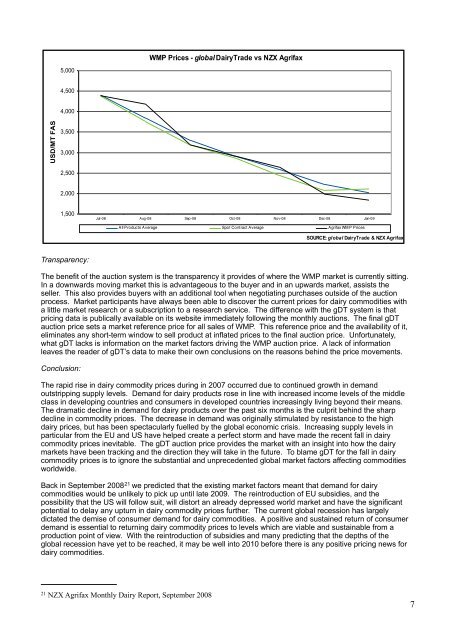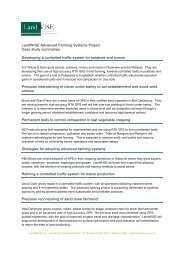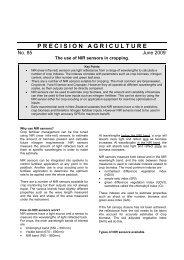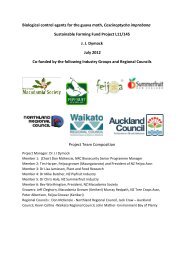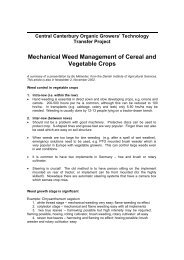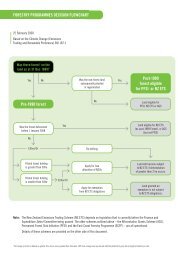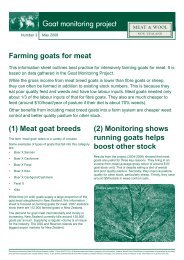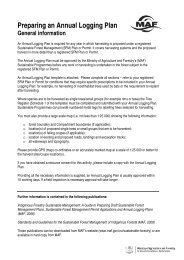You also want an ePaper? Increase the reach of your titles
YUMPU automatically turns print PDFs into web optimized ePapers that Google loves.
Transparency:<br />
The benefit of the auction system is the transparency it provides of where the WMP market is currently sitting.<br />
In a downwards moving market this is advantageous to the buyer and in an upwards market, assists the<br />
seller. This also provides buyers with an additional tool when negotiating purchases outside of the auction<br />
process. Market participants have always been able to discover the current prices for dairy commodities with<br />
a little market research or a subscription to a research service. The difference with the gDT system is that<br />
pricing data is publically available on its website immediately following the monthly auctions. The final gDT<br />
auction price sets a market reference price for all sales of WMP. This reference price and the availability of it,<br />
eliminates any short-term window to sell product at inflated prices to the final auction price. Unfortunately,<br />
what gDT lacks is information on the market factors driving the WMP auction price. A lack of information<br />
leaves the reader of gDT’s data to make their own conclusions on the reasons behind the price movements.<br />
Conclusion:<br />
The rapid rise in dairy commodity prices during in 2007 occurred due to continued growth in demand<br />
outstripping supply levels. Demand for dairy products rose in line with increased income levels of the middle<br />
class in developing countries and consumers in developed countries increasingly living beyond their means.<br />
The dramatic decline in demand for dairy products over the past six months is the culprit behind the sharp<br />
decline in commodity prices. The decrease in demand was originally stimulated by resistance to the high<br />
dairy prices, but has been spectacularly fuelled by the global economic crisis. Increasing supply levels in<br />
particular from the EU and US have helped create a perfect storm and have made the recent fall in dairy<br />
commodity prices inevitable. The gDT auction price provides the market with an insight into how the dairy<br />
markets have been tracking and the direction they will take in the future. To blame gDT for the fall in dairy<br />
commodity prices is to ignore the substantial and unprecedented global market factors affecting commodities<br />
worldwide.<br />
Back in September 2008 21 we predicted that the existing market factors meant that demand for dairy<br />
commodities would be unlikely to pick up until late 2009. The reintroduction of EU subsidies, and the<br />
possibility that the US will follow suit, will distort an already depressed world market and have the significant<br />
potential to delay any upturn in dairy commodity prices further. The current global recession has largely<br />
dictated the demise of consumer demand for dairy commodities. A positive and sustained return of consumer<br />
demand is essential to returning dairy commodity prices to levels which are viable and sustainable from a<br />
production point of view. With the reintroduction of subsidies and many predicting that the depths of the<br />
global recession have yet to be reached, it may be well into 2010 before there is any positive pricing news for<br />
dairy commodities.<br />
21<br />
<strong>NZX</strong> <strong>Agrifax</strong> Monthly Dairy Report, September 2008<br />
7


